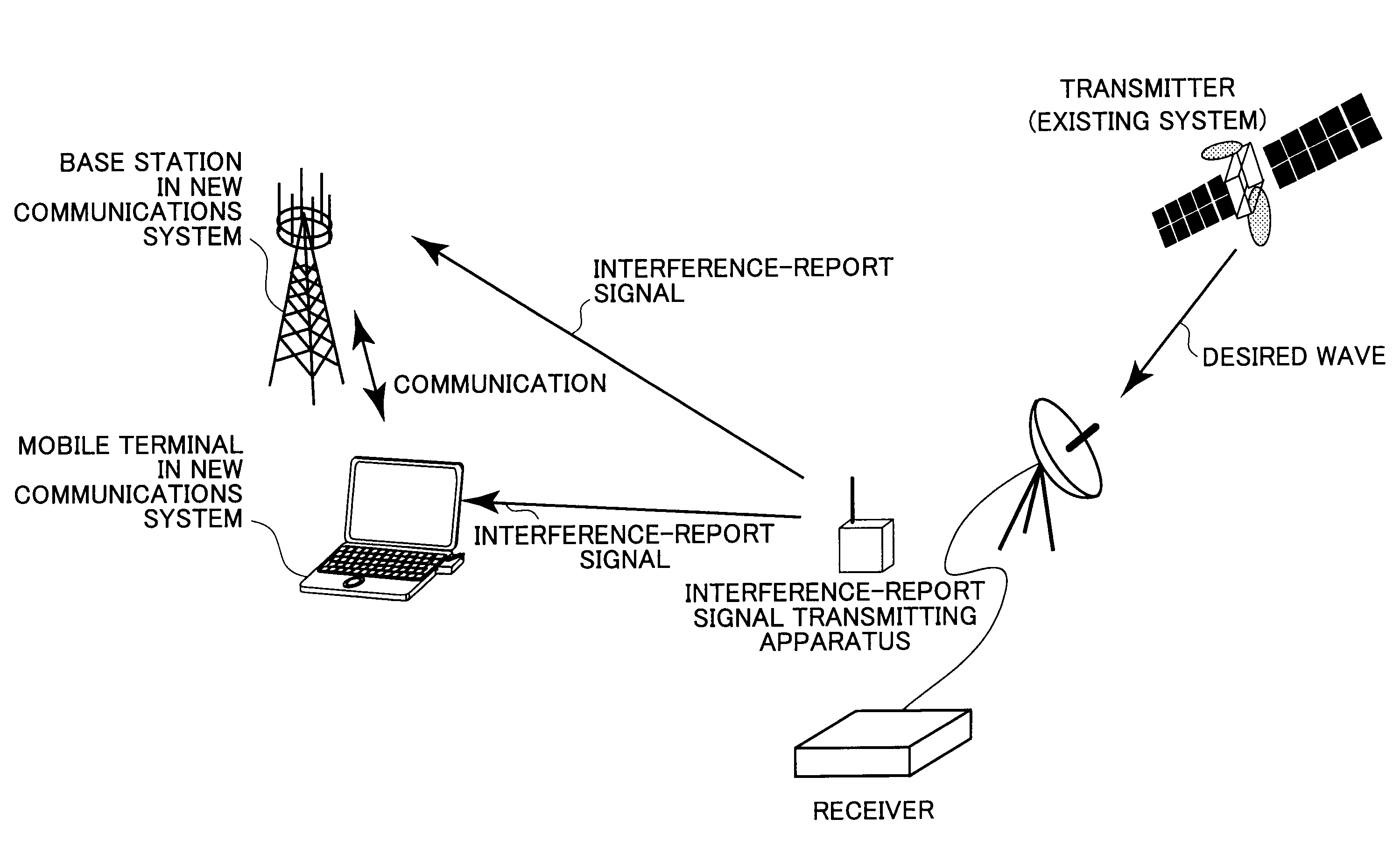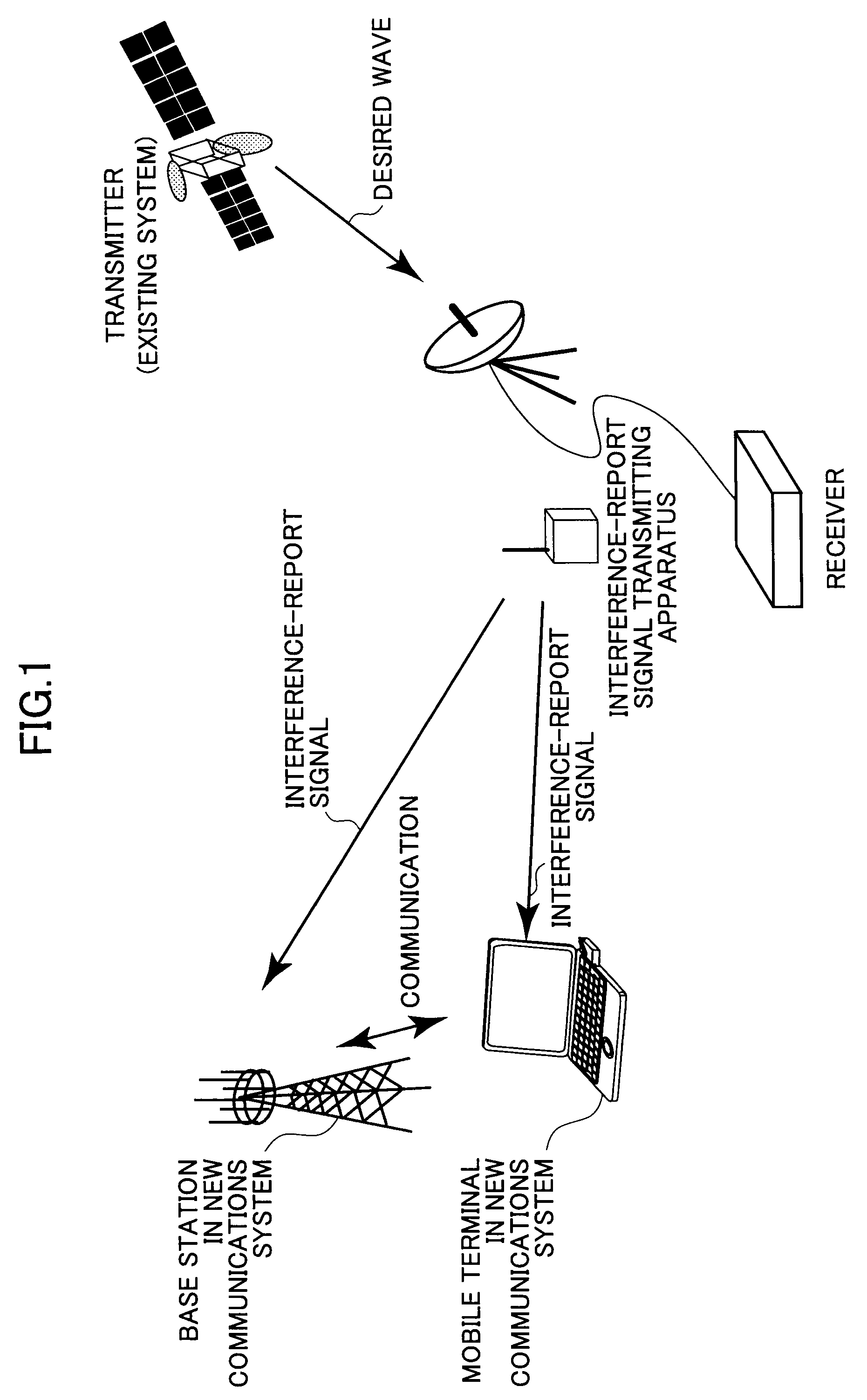Combined communications system, prohibiting-signal transmitting apparatus, wireless base station, and method
a communications system and signal transmission technology, applied in the field of combined communications systems, can solve the problems of limiting wireless frequency resources, not being easy to uniformly allocate to all countries and regions, and freedom in allocating a required frequency band
- Summary
- Abstract
- Description
- Claims
- Application Information
AI Technical Summary
Benefits of technology
Problems solved by technology
Method used
Image
Examples
embodiment 1
[0049]FIG. 4 is an exemplary configuration of a base station of a new system. A signal received by a wireless circuit as shown on the right is separated into a signal with an interference report signal possibly included, and a new system signal. Then, the signal with the interference report signal possibly included is input into an interference-report signal detector.
[0050]If the received signal has an interference report signal included, the interference-report signal detector determines a usage-restricted band from the interference-report signal, and reports the determined result to a resource allocator. As described above, the usage-restricted band is in use by the existing system in actual communications.
[0051]The resource allocator allocates uplink and downlink channel resources using a band other than a usage-restricted band. In the band actually used by the existing system, the base station of the new system must ensure that all signals including not only a normal data signal...
embodiment 2
CSMA
[0117]In FIG. 7, (a) shows an increased likelihood of collision of interference-report signals with an increased geographical density of the interference-report signal transmitting apparatuses. In the illustrated example, signals B and C collide with each other. With respect to this problem, CSMA / CA, and separating into slots, which are conventionally proposed interference avoidance schemes may be used.
[0118]When a CSMA-based method is used, the vicinity is monitored before transmitting a signal such as traffic data, and whether the interference report signal is transmitted in the vicinity is checked. If the interference report signal is transmitted in the vicinity, transmitting of the interference report signal from the own station is postponed until the next opportunity for transmitting ((b) in FIG. 7). On the other hand, if the interference report signal is not transmitted in the vicinity, the interference report signal from the own station is transmitted.
[0119]Separating Int...
embodiment 3
[0134]As the interference-report signals restrict the use of wireless resources by the new system base station, it is not desirable from the point of view of efficiently utilizing frequencies for the interference-report signals to be transmitted more than necessary. Moreover, even in the existing system, it is not desirable from the point of view that the power in the existing system interference-report signal transmitting apparatus is wasted, or the likelihood of collision among the interference-report signals increases.
[0135]In the third embodiment of the present invention, the interference-report signal transmitting apparatus transmits an interference-report signal only when a corresponding existing system receiver is in operation, and does not transmit an interference-report signal when it is not in operation. Therefore, the interference-report signal transmitting apparatus requires a function of determining whether the existing system receiver is in operation. This function may...
PUM
 Login to View More
Login to View More Abstract
Description
Claims
Application Information
 Login to View More
Login to View More - R&D
- Intellectual Property
- Life Sciences
- Materials
- Tech Scout
- Unparalleled Data Quality
- Higher Quality Content
- 60% Fewer Hallucinations
Browse by: Latest US Patents, China's latest patents, Technical Efficacy Thesaurus, Application Domain, Technology Topic, Popular Technical Reports.
© 2025 PatSnap. All rights reserved.Legal|Privacy policy|Modern Slavery Act Transparency Statement|Sitemap|About US| Contact US: help@patsnap.com



